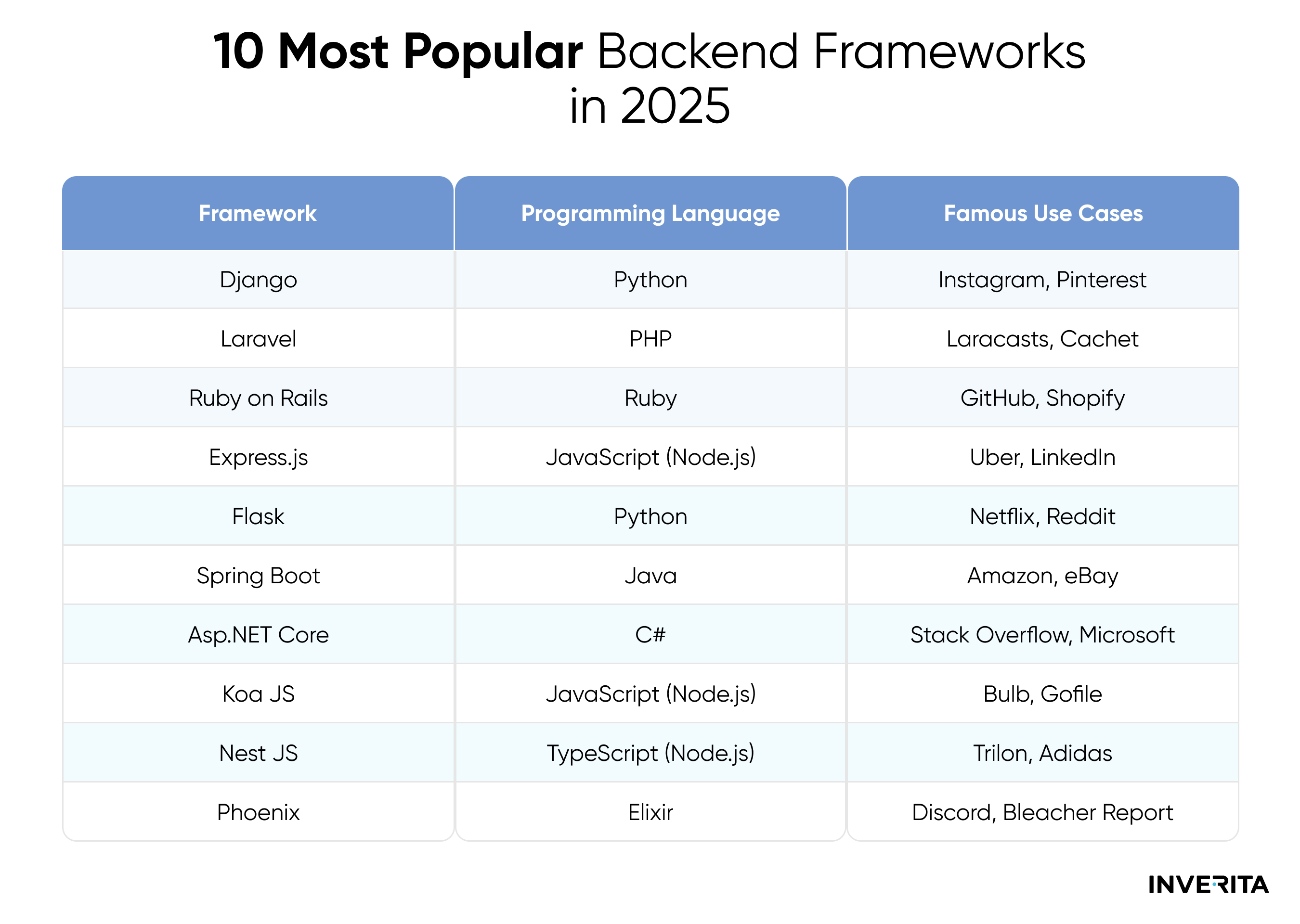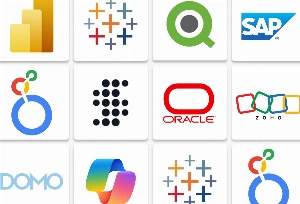Today, a software engineer is not limited to a couple of tools for development so aren’t business owners. However, the world of technology and backend development, in particular, is a dynamic, constantly evolving landscape.
In this article, find the list of the most used backend frameworks with their strong and weak sides so you can make informed decisions for your future projects.
How Backend Frameworks Differ From Others
Web backend frameworks are specifically designed to handle the server-side logic of web applications. They facilitate tasks such as database interactions, server configuration, API development, and user authentication, whereas frontend frameworks focus on rendering the visual elements and managing user experience on the browser.
Advantages of Backend Frameworks
Robustness
They provide a structured and reliable environment for developing server-side applications, including built-in features like routing, middleware, and error handling, which help in building stable and maintainable applications.
Integrations
Web backend frameworks are designed to integrate seamlessly with various databases, third-party services, and other tools. They offer libraries and plugins that simplify the process of connecting to external APIs, cloud services, and microservices architectures. This integration capability accelerates development and allows developers to build complex applications efficiently.
Scalability
Web backend frameworks are built to handle increasing loads by efficiently managing resources and providing features like load balancing and horizontal scaling. Frameworks like Spring Boot and ASP.NET Core, for example, offer robust support for scaling applications across multiple servers, ensuring that applications can grow to meet user demand without significant reengineering
Community Support
Popular backend frameworks benefit from large, active communities that contribute to their development and provide support. This community involvement ensures a wealth of resources, including tutorials, documentation, and third-party libraries. It also means that issues are quickly identified and resolved, and new features are regularly added to keep the frameworks up-to-date with industry standards.
Security
Security is a top priority for цуи backend frameworks, which often include built-in measures to protect against common vulnerabilities like SQL injection, cross-site scripting, and cross-site request forgery.
Best Backend Frameworks in 2026
Now, let’s move the list of best backend frameworks.
















_1764586939-small.webp)
